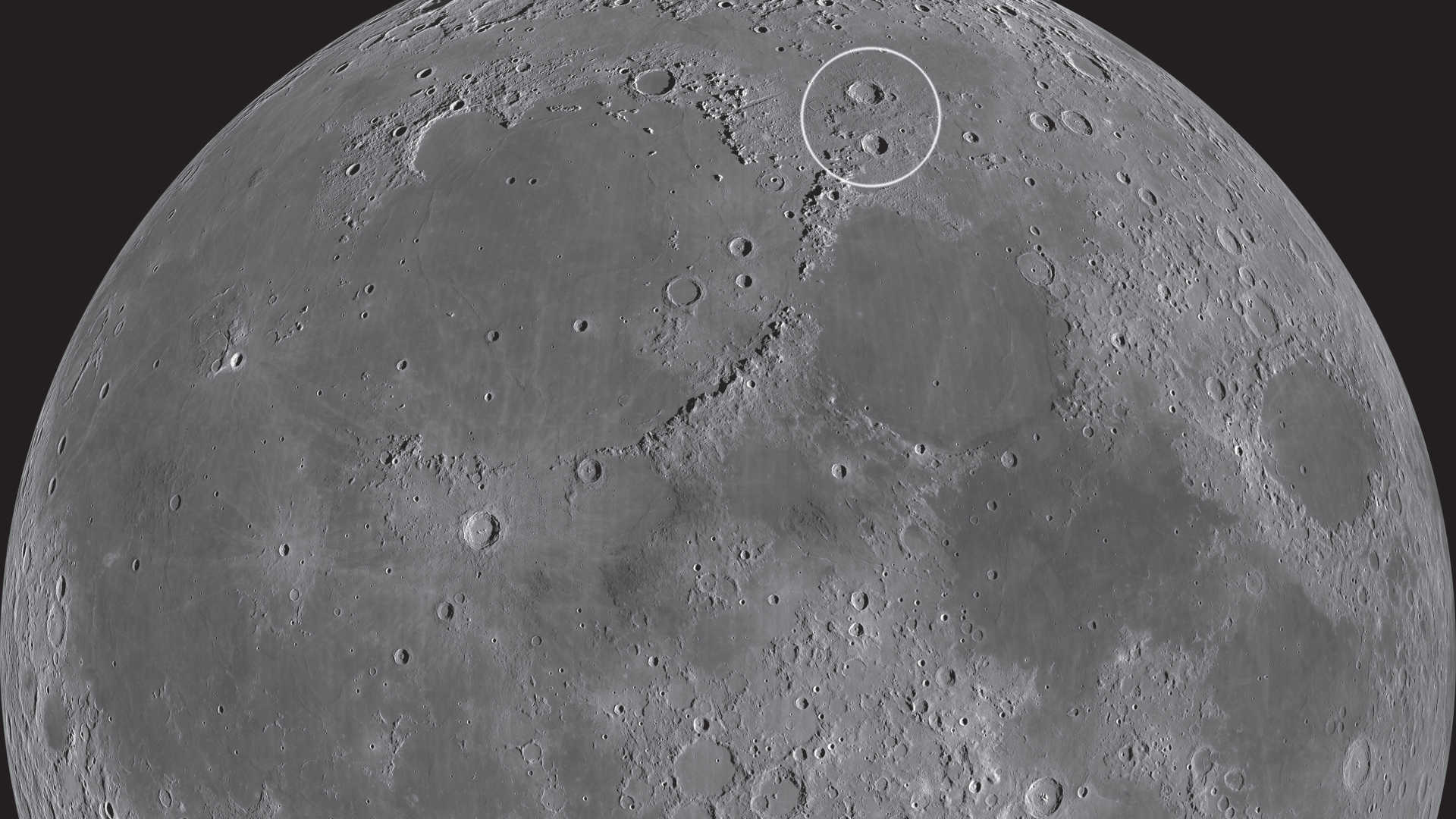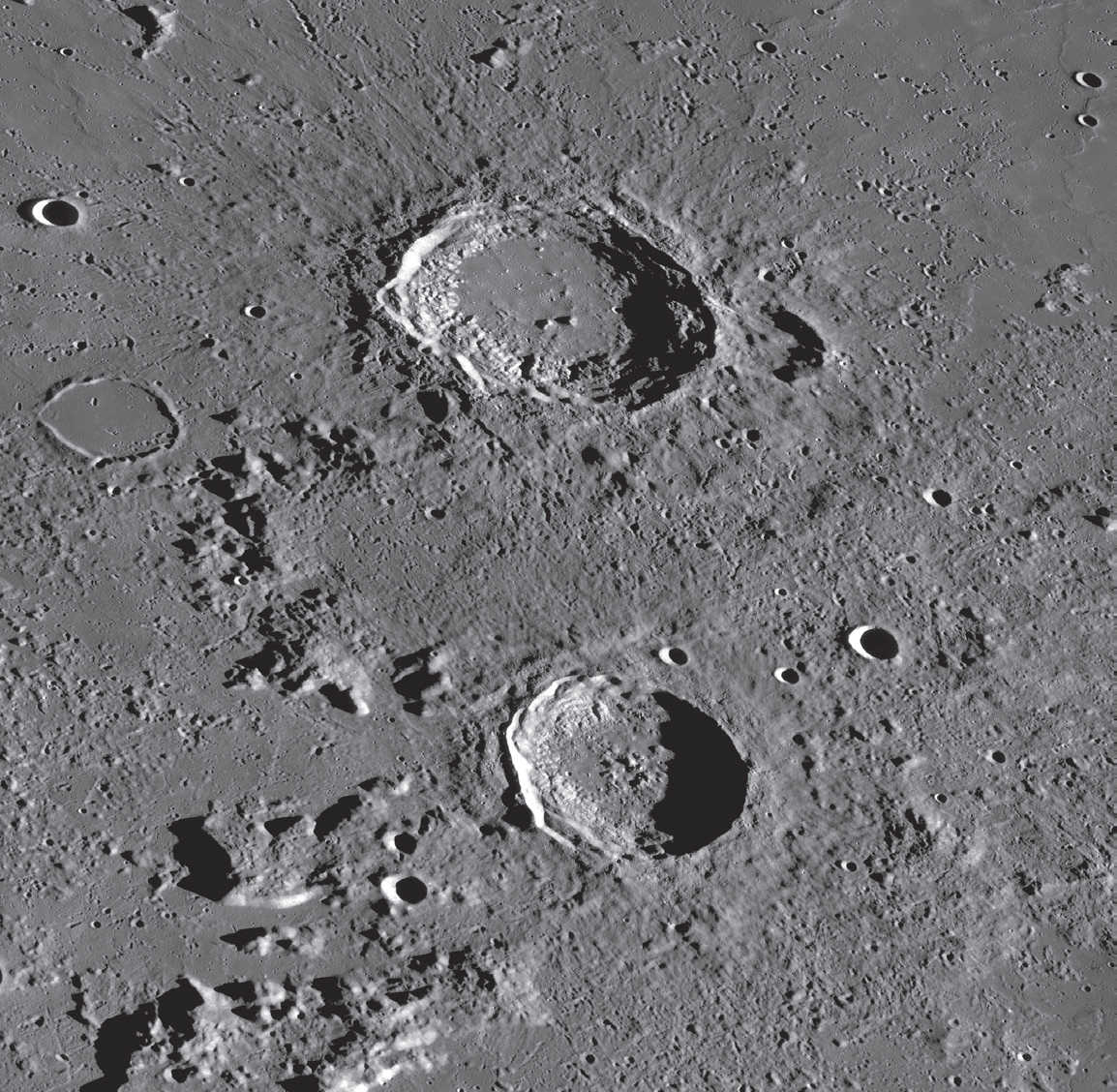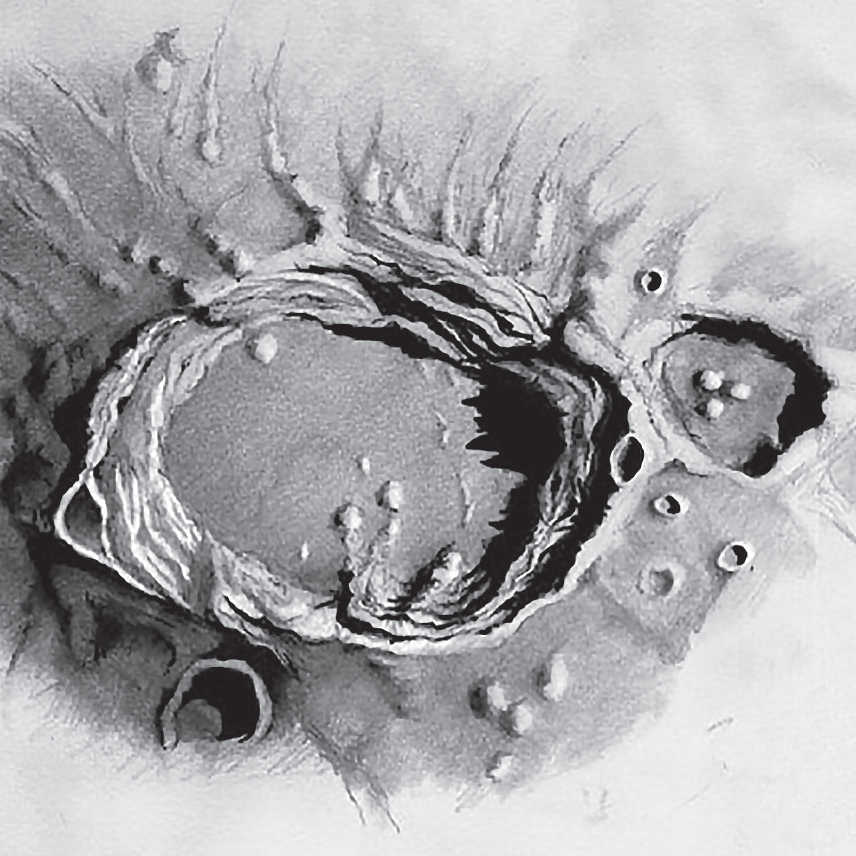A flying visit to the philosophers
Six days after New Moon, two striking impact craters dominate the region between Mare Frigoris and Mare Serenitatis.
 The crater pair Aristoteles and Eudoxus is located between the Sea of Cold and the Sea of Serenity. NASA/GSFC/Arizona State University
The crater pair Aristoteles and Eudoxus is located between the Sea of Cold and the Sea of Serenity. NASA/GSFC/Arizona State University Both craters are in well-prederved condition. NASA/GSFC/Arizona State University
Both craters are in well-prederved condition. NASA/GSFC/Arizona State UniversitySix days after New Moon, two striking impact craters dominate the region between Mare Frigoris (Sea of Cold) in the north and Mare Serenitatis (Sea of Serenity) to the south. The two Greek philosophers Aristotle and Eudoxus give their names to this appealing pair of craters, and in these lighting conditions they really attract attention.
Typical mountain rings
Aristoteles is a typical mountain ring and very similar to Copernicus, the usual representative of this class of crater. Its diameter of 87 km and its depth of 3,500 m are also roughly similar to Copernicus’ dimensions. Unlike Copernicus, however, Aristoteles has no distinct central mountain range; just two small peaks protrude from the lava-flooded crater floor. The 30 km wide crater Mitchell is located directly at Aristoteles’ eastern wall, the two impact craters forming another noteworthy pair.
On closer observation, it becomes clear that the smaller crater Mitchell is overlapped by the larger Aristoteles. The characteristic stepped terraces are easily visible on the east wall of Aristoteles, while the west side drops steeply into the crater floor and appears less structured. A closer look at the immediate surroundings of the mountain ring reveals radial furrows of impact material, mainly in the direction of Mare Frigoris. There, in calm air, a filigree chain of very small impact craters can be seen, which form an almost continuous narrow line toward the north-west, finishing precisely at the remains of an unnamed ghost crater.
Hills not mountains
 Sketch of Aristoteles and Mitchell as seen through a telescope with 400 mm aperture, 385× magnification. An enormous amount of detail can be seen with a telescope of this aperture. Serge Vieillard
Sketch of Aristoteles and Mitchell as seen through a telescope with 400 mm aperture, 385× magnification. An enormous amount of detail can be seen with a telescope of this aperture. Serge VieillardLocated around 100 km south of Aristoteles, in the middle of a highland region characterised by small hills and mountains, lies Eudoxus, the 67-km-wide ring mountain. This crater, like its "colleague" Aristoteles, with its sloping walls and largely flat floor, also displays the characteristic features of a ring mountain. But here, too, there is no distinct central mountain range. Instead, there is a dense cluster of hills of different sizes in the centre of the floor.
The substrate of this highland region consists of the ejecta from Mare Imbrium (Sea of Showers). This less dense rock may have prevented any strong movement of the floor after the impact that created the crater, and so no tall central mountain range was formed.
Best visibility 6 or 19 days after New Moon
Author: Lambert Spix / Licence: Oculum-Verlag GmbH
